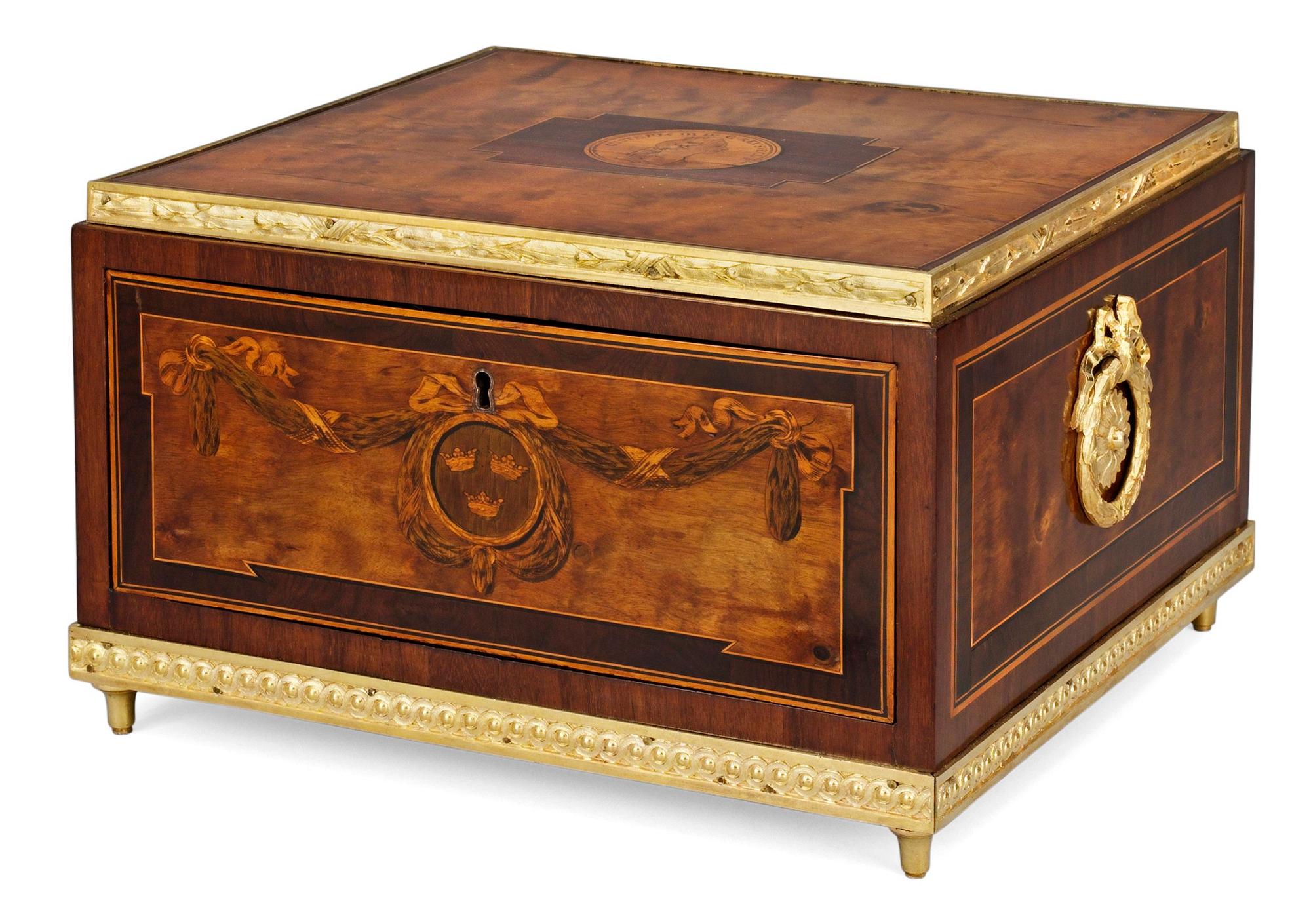A Swedish Royal Gustavian Medaillier by the cabinet-maker Georg Haupt, signed and dated 1780.
Fanerat med björk, amarant, buxbom och färgat lövträ. Beslag av brännförgylld mässing i form av lagerstav, flätband samt rosettupphängda ringhandtag på sidorna. Sex lådor bakom klaff. Fronten med inlagd medaljong med svenska lilla riksvapnet upphängd i lagergirland. Ovansidans mitt med porträttmedaljong av Gustav III och texten "GUSTAVUS III D. G. REX SVECIAE" (efter medalj av Gustaf Ljungberger). Lådorna är numrerade med bläck No 1-6. Låda nr 3 är signerad med bläck ”fait Chez Georg Haupt, Ebeniste du Roy à Stockholm, l’an 1780”. Längd 30,5, bredd 28,5, höjd 18,5 cm. Nyckel medföljer.
Literature
Riksarkivet, Statskontoret Kansliet, AIa:vol. 118 (1780), sid. 365.
Auktions-katalog XXVI, Riechmann & Co, Halle, 24 Sep. 1924, Gold-Münzen und -Medaillen aus dem Besitze Seiner Königlichen Hoheit des Grossherzogs Friedrich August von Oldenburg
More information
A Swedish Royal Gustavian Medaillier by the cabinet-maker Georg Haupt, signed and dated 1780. It is decorated with wooden inlays depicting the Swedish national coat of arms and a portrait of Gustav III, the medaillier contains six drawers, one of which is signed “fait Chez George Haupt. Ebeniste du Roy à Stockholm, l’an 1780”. It measures length 30,5, width 28,5, height 18,5 cm. The cabinet, which originally contained 65 gold medals, was given by the Swedish King Gustav III to his cousin, prince Peter Fredrik Ludvig of Holstein-Gottorp (later duke of Oldenburg 1823 -29) when the latter visited Sweden in 1780. The total weight of the gold medals exceeded four kilograms and the numismatic and historic importance of the medals were highly appreciated at the time. Most of the valuable medals came from the collection of Gustav’s late father, Adolf Fredrik of Holstein-Gottorp, who became king of Sweden in 1751. Obviously Gustav III saw the symbolic value of this impressive gift with a strong family connection. An eyewitness described the occasion when Gustav presented the “beautiful cabinet with inlays” to the prince with following words: “Cette collection qui contient l’éloge de votre famille vous sera sans doute agréable, mon cousin; je vous prie de l’accepter comme souvenir d’un ami et d’un bon parent.” (“This collection, which honors your family, will certainly please you, my cousin; would you kindly accept it as a souvenir from a friend and a good relative.”) The medal collection descended within the Oldenburg family until it was sold at an auction in Germany in 1923. The cabinet was not offered at that auction; it later surfaced in a German collection, at which point its background was unknown. Recent research has uncovered the history of the cabinet: a note found in the Swedish National Archive states that the celebrated Swedish cabinetmaker Georg Haupt was paid for his work regarding the gift to Peter Fredrik Ludvig of Holstein-Gottorp in 1780.



































































